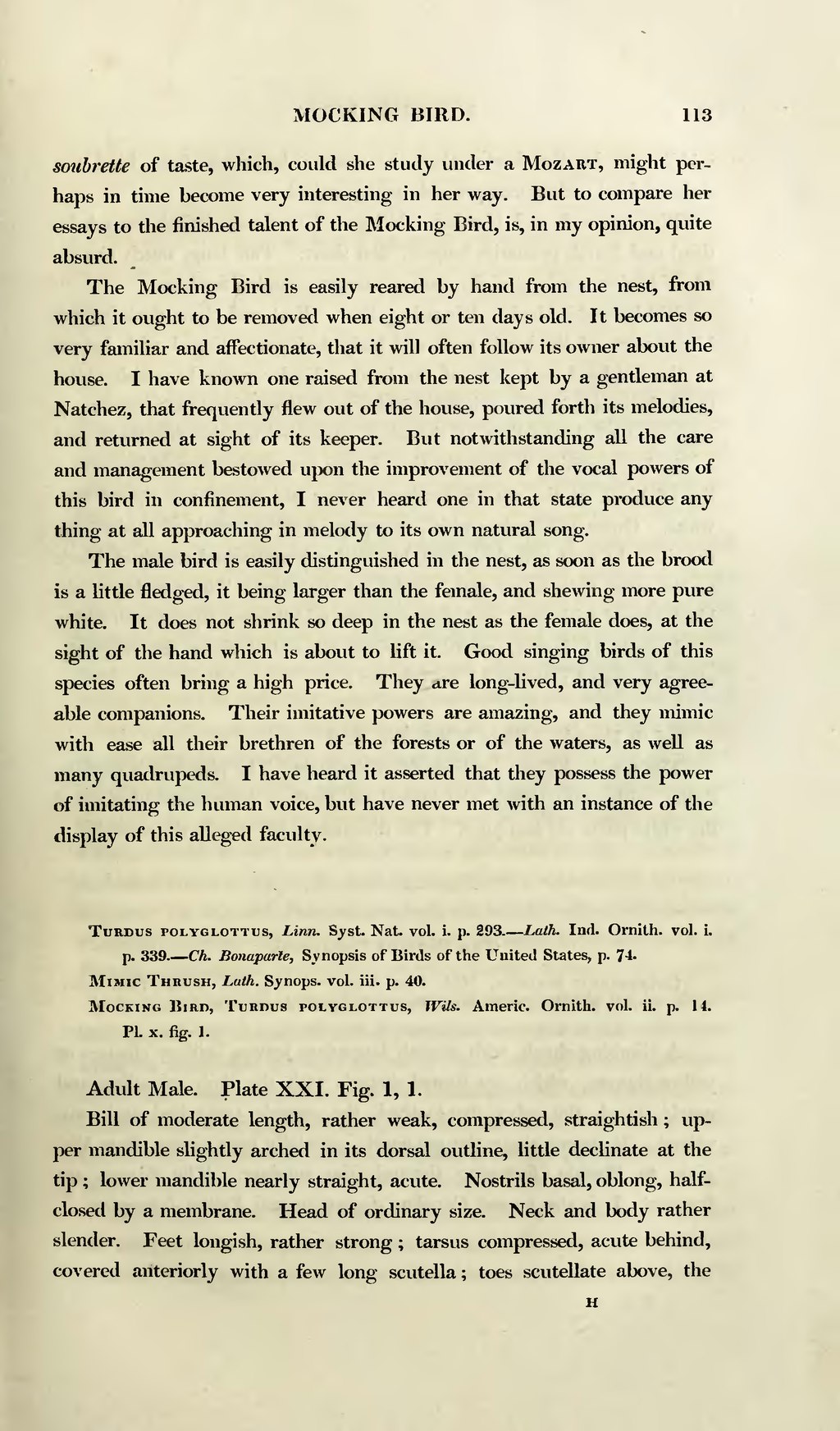soubrette of taste, which, could she study under a Mozart, might perhaps in time become very interesting in her way. But to compare her essays to the finished talent of the Mocking Bird, is, in my opinion, quite absurd.
The Mocking Bird is easily reared by hand from the nest, from which it ought to be removed when eight or ten days old. It becomes so very familiar and affectionate, that it will often follow its owner about the house. I have known one raised from the nest kept by a gentleman at Natchez, that frequently flew out of the house, poured forth its melodies, and returned at sight of its keeper. But notwithstanding all the care and management bestowed upon the improvement of the vocal powers of this bird in confinement, I never heard one in that state produce any thing at all approaching in melody to its own natural song.
The male bird is easily distinguished in the nest, as soon as the brood is a little fledged, it being larger than the female, and shewing more pure white. It does not shrink so deep in the nest as the female does, at the sight of the hand which is about to lift it. Good singing birds of this species often bring a high price. They are long-lived, and very agreeable companions. Their imitative powers are amazing, and they mimic with ease all their brethren of the forests or of the waters, as well as many quadrupeds. I have heard it asserted that they possess the power of imitating the human voice, but have never met with an instance of the display of this alleged faculty.
Turdus polyglottus, Linn. Syst. Nat. vol. i. p. 293.—Lath. Ind. Ornith. vol. i. p. 339—Ch. Bonaparte, Synopsis of Birds of the United States, p. 74.
Mimic Thrush, Lath. Synops. vol. iii. p. 40.
Mocking Bird, Turdus polyglottus, Wils. Americ. Ornith. vol. ii. p. 14. Pl. x. fig. 1.
Adult Male. Plate XXI. Fig. 1, 1.
Bill of moderate length, rather weak, compressed, straightish; upper mandible slightly arched in its dorsal outline, little declinate at the tip ; lower mandible nearly straight, acute. Nostrils basal, oblong, half-closed by a membrane. Head of ordinary size. Neck and body rather slender. Feet longish, rather strong; tarsus compressed, acute behind, covered anteriorly with a few long scutella; toes scutellate above, the
